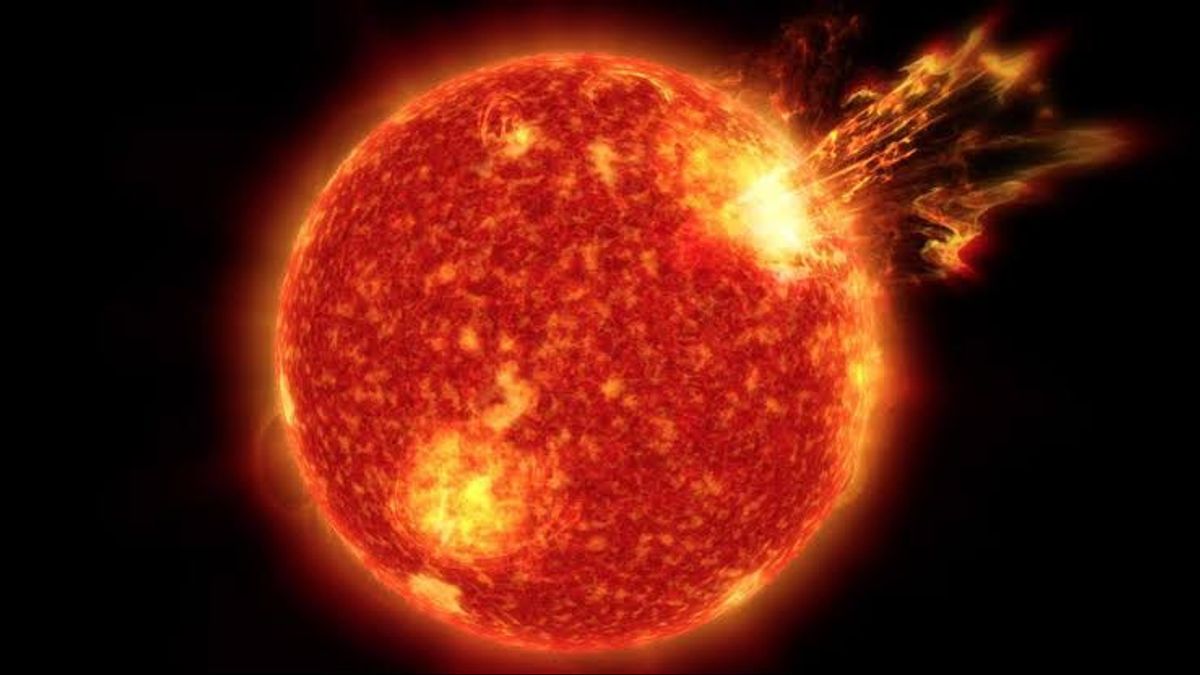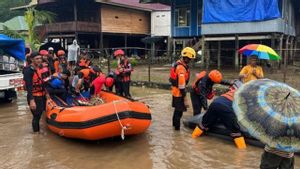JAKARTA - Geomagnetic storms are currently the biggest threat to SpaceX's satellite, Starlink, which was recently launched into orbit. A total of 49 satellites were affected in the event.
“These storms cause the atmosphere to warm and the density of the atmosphere at our low dispersion altitude to increase. The Starlink team ordered the satellites into safe mode where they would fly (like a piece of paper) to minimize drag," SpaceX said.
In fact, 40 satellites never go out of safe mode and, are expected to fall into Earth's atmosphere. While this incident is only a small setback for SpaceX, disproportionate to its goal of burying the planet with more than 42,000 reflecting devices, geomagnetic storms pose a continuing threat to the world's electrical infrastructure.
The storm disrupted broadcast and telecommunications signals, damaged power grids, disrupted global navigation systems. It even exposes astronauts and airplane passengers to dangerous doses of solar radiation.
The National Oceanic and Atmospheric Administration (NOAA) defines a geomagnetic storm as a major disturbance of the Earth's magnetosphere that occurs when there is a highly efficient exchange of energy from the solar wind into the outer space environment around Earth.
Basically, when the Sun emits a massive blast of solar wind, it travels through space and strikes the Earth's magnetic shell where all that energy enters the planet's magnetic field, causing electrical chaos while creating a cluster of atoms upstream.
Changes in the structure and density of Earth's ionosphere as a result of solar storms can disrupt and directly block transmission of high-frequency radio and ultra-high-frequency satellites. GPS navigation systems are also susceptible to interference during these events.
How to Get an Early Warning of a Geomagnetic Hurricane?
In order to extend the time between the solar eruption and the resulting wind hitting the magnetosphere, University of Michigan researcher Gabor Toth and his team have worked to develop version 2.0 of the Geospace Model using advanced computers, learning systems, and statistical analysis schemes.
With it, astronomers and power grid operators are given an early warning of 30 minutes before the solar wind reaches the planet, enough time to put vital electrical systems into standby mode or mitigate the impact of the storm.
VOIR éGALEMENT:
"We rely on X-ray and UV data from satellites measuring plasma parameters a million miles away from Earth. From that point on, we can run the model and predict the arrival and impact times of magnetic events," explains Toth.
Likewise with NASA, which has also developed and launched a number of missions in recent years to better predict the chaotic behavior of our local star.
In 2006, for example, the space agency launched the Solar-Terrestrial Relations Observatory (STEREO) mission in which a pair of observatories measured the flow of energy and matter from the Sun to Earth.
Currently, NASA is working on two more missions, namely the Multi-slit Solar Explorer (MUSE) and HelioSwarm to better understand the Sun-Earth connection.
“MUSE and HelioSwarm will provide new and deeper insights into the sun's atmosphere and space weather. These missions not only expand the science of our other heliophysical missions, but they also provide a unique perspective and new approach to understanding the mysteries of our star," said Thomas Zurbuchen, associate administrator for science at NASA.
The English, Chinese, Japanese, Arabic, and French versions are automatically generated by the AI. So there may still be inaccuracies in translating, please always see Indonesian as our main language. (system supported by DigitalSiber.id)













